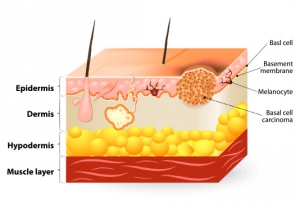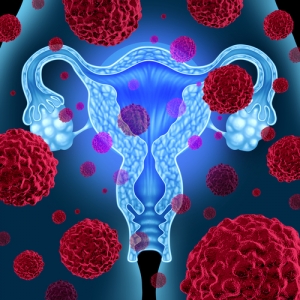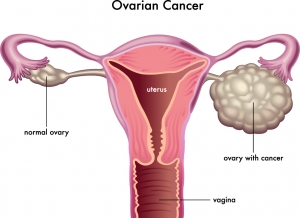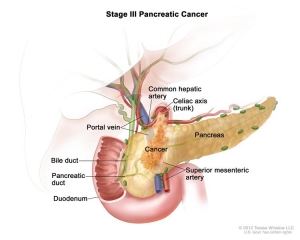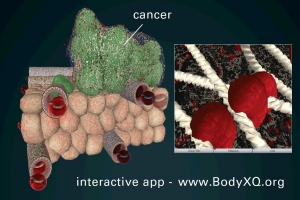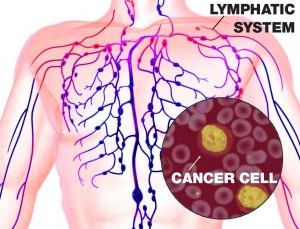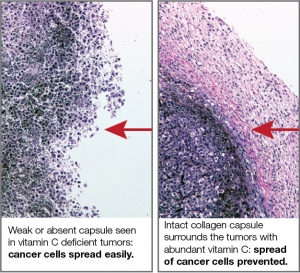Skin cancer is the most common of all types of cancers. While melanoma is the most feared skin cancer, non-melanoma skin cancers are far more common. The American Cancer Society estimates 73,000 Americans will be diagnosed with melanoma in 2015; however, there will be 3.5 million new cases of non-melanoma cancers.
Cervical cancer is the third most commonly diagnosed cancer and the fourth most common cause of death in women. The American Cancer Society estimates 12,900 new cases of cervical cancer will be diagnosed in 2015. Most women diagnosed with cervical cancer are between 30 to 60 years old. While the routine Pap test has reduced cervical cancer deaths in developed countries, it remains a major cause of deaths in women in developing countries. According to 2012 data, approximately 528,000 new cases of cervical cancer were diagnosed worldwide.
The ovaries are part of the female reproductive system and are located on each side of the uterus. They are responsible for the storage and release of an egg every month during a woman’s childbearing years, and the production of the hormones estrogen and progesterone. Estrogen and progesterone control the menstrual cycle and pregnancy, and have protective effects on the heart, bones and multiple organ systems in women.
A primary brain tumor is a highly aggressive type of tumor originating from brain tissues. Secondary brain tumors are the tumors that spread to the brain from cancers originating in other parts of the body (such as melanoma, the lungs, breasts, kidneys, and colon). The US estimates 23,380 adults will be diagnosed with primary brain tumors in 2014 and approximately 14,320 adults will die from those tumors. European statistics reported 57,132 cases of malignant brain tumors according to a 2012 statistical report.
The pancreas, located directly behind the lower part of the stomach, is a vital organ secreting various digestive enzymes and hormones (e.g. insulin) that regulate blood sugar levels in the body.
Cancer of the pancreas is a serious and almost always fatal disease. It is the twelfth most common cancer in the world with 338,000 new cases diagnosed in 20121. However, it is projected that pancreatic cancer will be the second deadliest cancer by 2030. According to the American Cancer Society’s 2014 estimates, 46,420 people will be diagnosed with pancreatic cancer in the US and 39,590 deaths are expected to be due to this disease. In Europe, there were approximately 103,845 cases of pancreatic cancer in 2012. Only 4-5% of the people diagnosed with pancreatic cancer live beyond 5 years after their diagnosis. This is because pancreatic cancer is usually diagnosed at a very late stage due to a lack of specific symptoms and, similarly to other cancers, no effective cure is available.
Excluding skin cancer, breast cancer is the most common cancer in women in the US, and about 1 in 8 women are likely to develop it during their lifetime. The American Cancer Society estimates that in 2014, about 232,670 new cases of invasive breast cancer, and 62,570 of noninvasive (in-situ) breast cancers will be diagnosed in the US. Worldwide approximately 1.38 million new cases are diagnosed and 458 000 deaths occur from breast cancer each year.
Osteosarcoma is the most common type of bone cancer frequently occurring in children and young adults between the ages of 10 and 30. People over 60 are also at an increased risk. In the US, almost 800 new cases of osteosarcoma are diagnosed every year and more than 400 are in children and teens younger than 20. Initial symptoms of osteosarcoma, such as pain, bone or joint swelling, and decreased joint motion can be misleading and frequently occur in children due to sports and other injuries. In older adults, the symptoms can be misdiagnosed as arthritis.
Leukemia is a cancer of the bone marrow, which produces blood cells. Patients with leukemia experience an excessive production of white blood cells (WBCs) or leukocytes. It is the tenth most commonly diagnosed cancer in the US and is the most common cancer in children. In the US, approximately 52,380 people are expected to be diagnosed with leukemia in 2014. The numbers are equally staggering in Europe with 82,329 cases; and Asia reported 167,448 cases of leukemia in 2012. Leukemias are largely divided into acute (rapidly progressing), chronic (slower progression), myeloid, and lymphoid types depending on the type of affected cells (AML, ALL, CML, CLL). The most common type of leukemia in children is ALL, and in adults, it is AML, CML, and CLL.
Every three minutes in the United States one person is diagnosed with some type of blood cancer. This includes cancers of the white blood cells (leukemia), various parts of the lymphatic system (lymphoma) and in bone marrow (myeloma). Lymphomas are cancers of the immune system affecting lymphocytes (a specific type of white blood cells) causing enlargement of lymph nodes. These enlarged lymph nodes are generally painless, unlike painful nodes in an infection. Such painless enlargements of the lymph nodes in the neck, armpits, and groin areas are usually one of the initial symptoms of lymphomas, and are associated with weight loss, night fevers, and other symptoms.
The term “connective tissue” is frequently discussed in association with skin or joint disorders, and many people are not aware of how important it is in other chronic diseases such as heart disease and cancer.
Over 90% of cancer deaths are due to the extensive spread of cancer (metastasis). Cancer cells metastasize by breaking the connective tissue barrier that surrounds them. The strength and stability of connective tissue depends on an optimum production of collagen fibers and the prevention of uncontrolled tissue destruction. An abundant availability of several micronutrients, especially vitamin C, and the amino acids lysine and proline, is essential for this function. Unlike most animals, humans are not capable of internal production of vitamin C and lysine. Yet, most of the cancer research is conducted on mouse models that do produce vitamin C. To overcome this barrier, our research institute utilized a special type of mice that mimic human metabolism in respect to the lack of internal vitamin C production.
